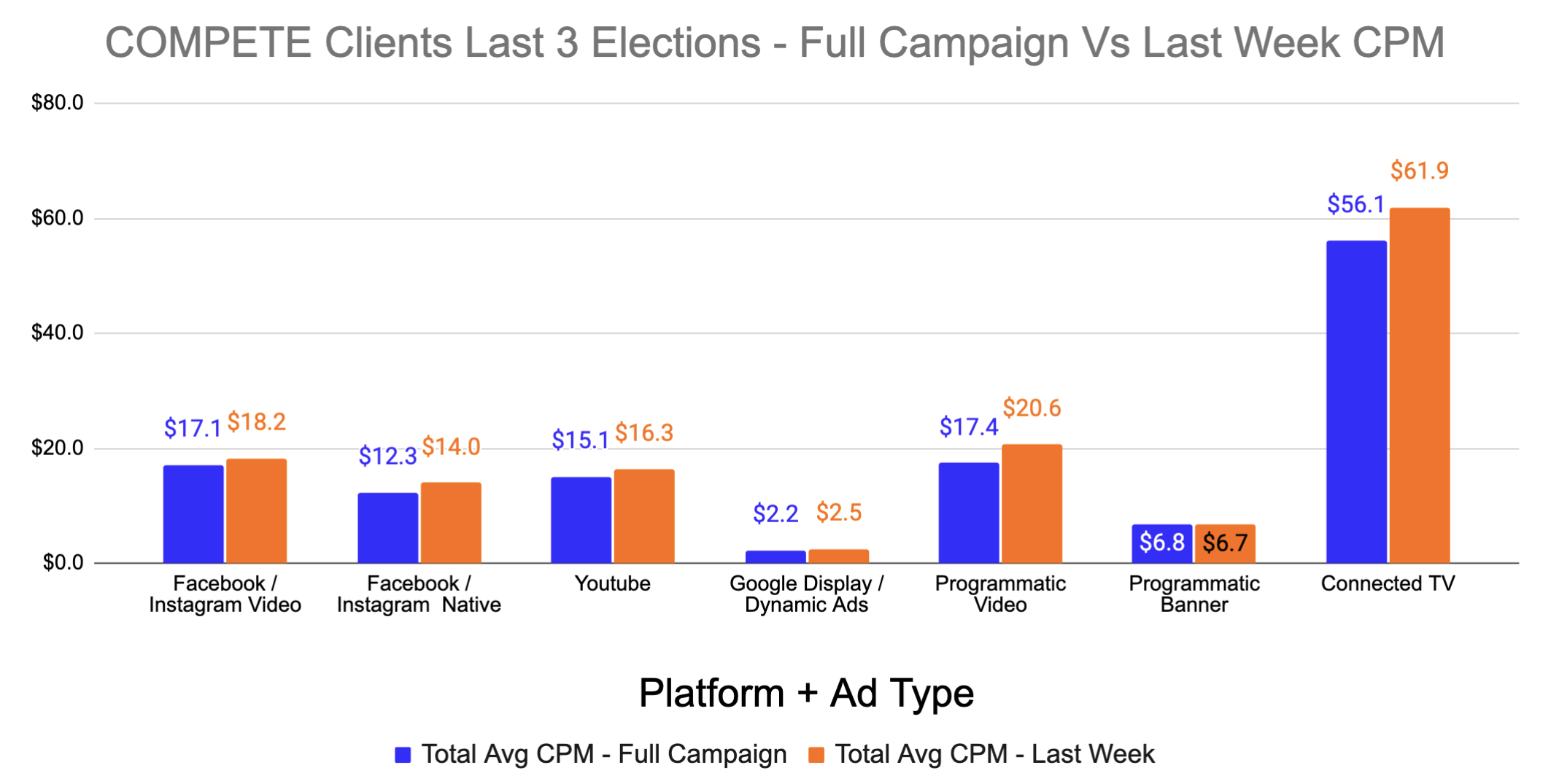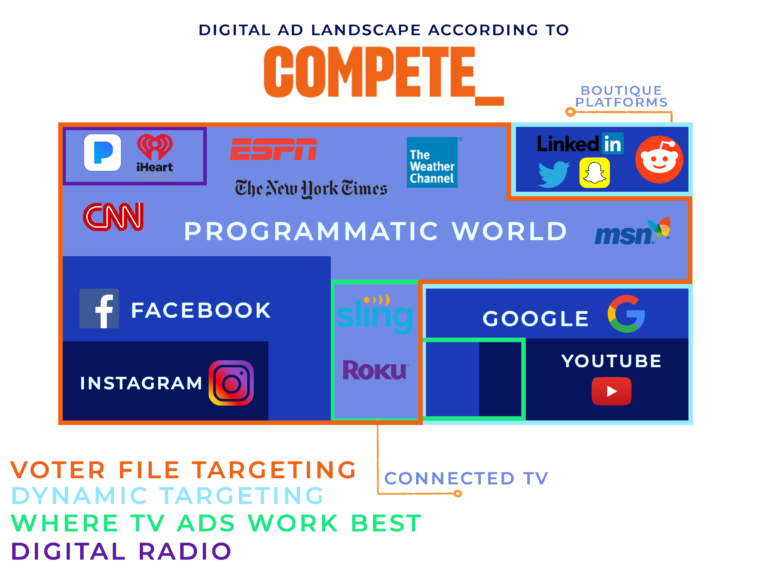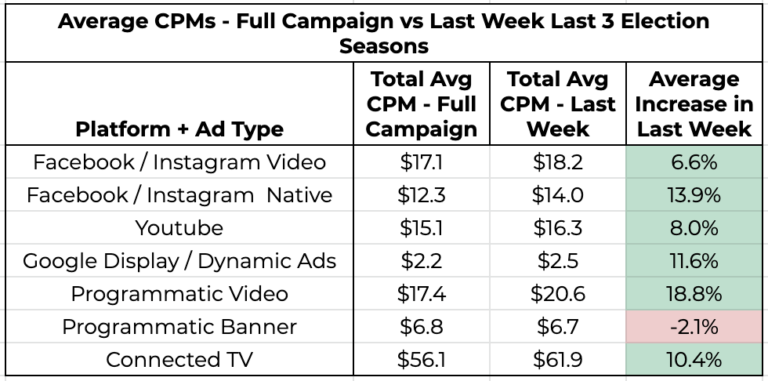With November elections fast approaching, we want to share with you a little-known fact about Digital Ads that may change your Digital Voter Contact plans.
One of the oldest and most tried-and-true rules for crafting Voter Contact programs is “Communicate with targets as close to when they’re going to vote as possible”. An ad served 1 day from when a target audience member will vote is, in most circumstances, more impactful than an ad served 2 days out, which is more impactful than an ad served 3 days out, etc. etc.
This is almost certainly true for Digital Ads, just like all other Voter Contact mediums. Here’s the kicker: Digital Ad prices often go up, sometimes way up, at the end of elections. The graph below shows the average price we’ve paid for CPM (Cost Per Thousand Impressions) across the major Ad Platforms that we buy on. The sample includes a large portion of campaigns we ran across the country over the last 3 elections: The 2021 Primary, the 2020 General, and the 2020 Primary.

On just about every Digital Ad Platform and Ad Type, prices go up during the last week of a campaign. The average increase for our data set for all ad inventory is about 10%. In highly competitive races, we see that increase get even higher, especially on Facebook, Instagram, and Connected TV, where increases can balloon to 100% in the last week of an election.
There are a few reasons why this increase occurs:
- Digital Ads are purchased through a giant, real-time, Programmatic auction. The mechanics for delivery are quite different from mail or TV ad delivery, where pricing is (more or less) set at a fixed rate through an advanced purchase. The number of advertisers in the Digital auction, the amount they are willing to bid, and the quality of their ads all affect the end price that your campaign pays.
- Typically, in the last week of an election, more advertisers enter the market. Whether that’s campaigns who are late to the party or only have budget for the last week, or outside groups coming in to support their candidates with GOTV ads or whack opponents with negative ads, these additional bidders increase the price for Digital Inventory.
- Most Digital Ad programs budget significantly more for the last week of a campaign than prior weeks but keep more or less the same target audience. To spend their increased budget, they must bid more to win more total auctions to the target audience, thus increasing the price.
Is an ad served 1-7 days out from an election 10% more valuable than an ad served 20 days out? Is it 20% more valuable? This price increase cuts against the conventional wisdom that budgets should be deployed closer to elections. There’s a sliding scale here that Digital advertisers working for campaigns must take into account!
Here are some adjustments you can consider to offset the end-of-elections price increase trend:
- Smooth your Digital Advertising budgets out a bit. Consider a more even deployment of ads budgets week over week instead of backloading budgets for the last week of the election. The increase in Vote-By-Mail in most states and the “Partisan Hardening”*** that occurs towards the end of the election are also reasons to go with “Start earlier, smooth it out” deployment.
- Move your budgets around to different Ad Platforms if Ad Prices skyrocket in the last week. The different Digital Ad Platforms all have their own auction mechanics, and Political advertisers value the platforms at uneven amounts. If you see Facebook, Instagram, and Connected TV ad prices go substantially up, but the other platforms are staying more or less steady, you can move budget over to them to get the “better deal” on inventory on the less competitive Ad Platforms.

All that said, be careful overdoing your adjustments. The “Serve ads closer to when people vote” general rule still applies. Just be aware of the way Digital Ad pricing trends can cut against it.
We hope this little overview of Digital Pricing has got you noodling on the best way to deploy your Voter Contact budgets! Below is a table with the price increases by Platform compared to the full campaign from the graph above.
Good luck with your November campaigns, and happy auctioneering.
Zach Mandelblatt
President
Zach@CompeteEverywhere.com
503-819-6778

*** – “Partisan hardening” is the theory that voters are more persuadable further out from elections, before they retreat into their usual partisan corners. It’s another reason to consider smoothing out Digital Voter Contact budgets.

